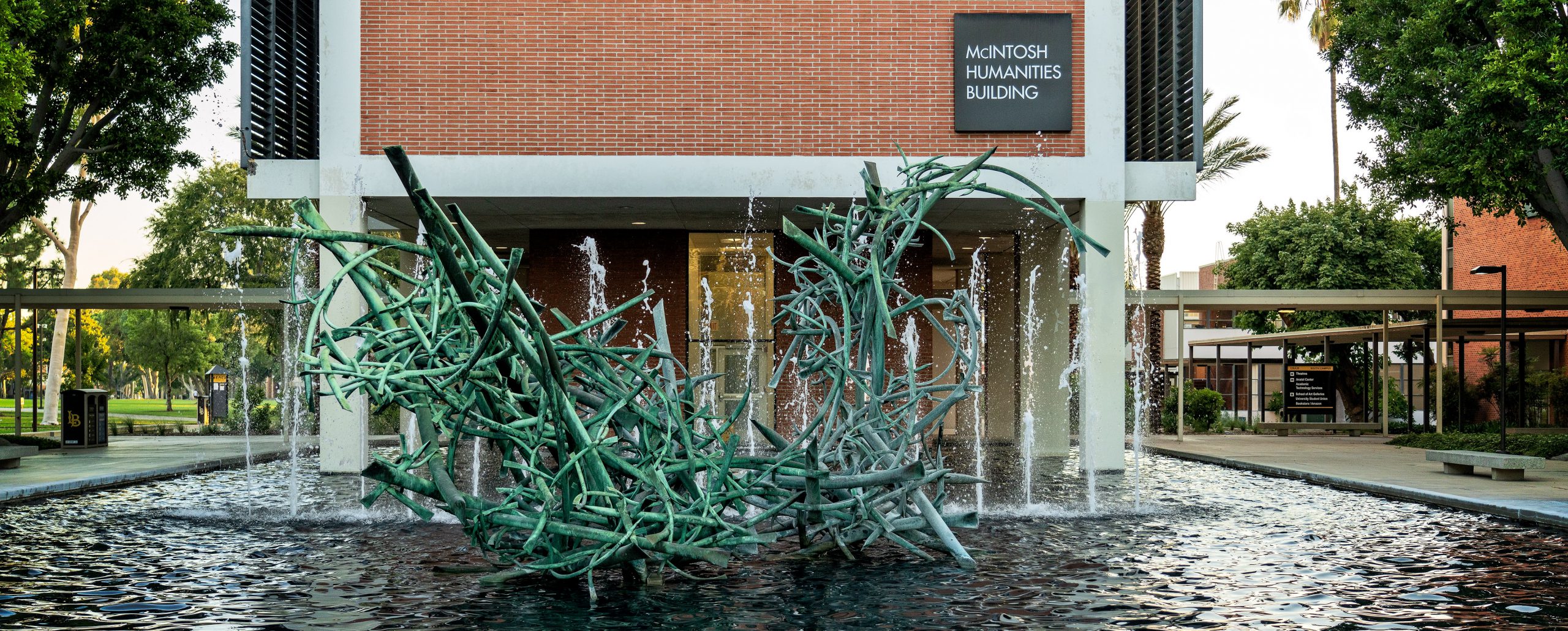American Indian Studies Rebuilds Tongva Canoe
October 10, 2013It began as a dream for Cindi Alvitre, American Indian Studies (AIS) professor and the director of the Ti’at Society. Now, more than two decades later, the product of Alvitre’s vision – a traditional indigenous canoe called a ti’at – is calling Long Beach its home.
Sometime in the 1980s, Alvitre dreamt of a giant warrior whose shoulders were mountains from the Santa Ana Mountain range. Lava spewed from his head and his eyes were closed. Later in the dream, she was in front of a lake with canoes. When they moved in unison the warrior opened his eyes, the lava stopped and the mountains parted. In between them was Catalina Island.
Two weeks later a philanthropist interested in indigenous maritime culture called Alvitre and said he wanted to build a Tongva ti’at.
“He describes it and I’m like, ‘You’re describing what I dreamt,’ and I told him about the dream and he was taken aback,” Alvitre said.
In the 1990s her ti’at – Moomat Ahiko – would become a reality, and recently has arrived in Long Beach, where the American Indian Science and Engineering Society at CSULB will be repairing the canoe. The canoe’s name, Moomat ahiko, means “breath of the ocean” in the Tongva language. From bow to aft, the canoe stretches 27 feet and it weighs about 750 pounds.
For now, it is being housed near El Dorado Park at the home of the program director of American Indian Studies at CSULB, Craig Stone, while the boat is made seaworthy. However, its hosts are looking for a more permanent boathouse.
Eventually, Alvitre wants to put the canoe on the water along with a second canoe for display that the AIS and the Engineering Society are hoping to build using purely traditional methods.
“As young people we always need a challenge, and physically this is especially one,” said AISES President Vincent Holguin. The club has been granted a large space to work on creating a new vessel in the College of Engineering, Holguin said.
By summer they hope both vessels will be ready for the 22-mile voyage to Catalina Island, or they hope to join the Chumash in their annual 19-mile journey they make each fall from Ventura to Santa Cruz Island.
Adapted from Orange County Register‘s larger piece “Tongva canoe a dream”
Written by Lauren Williams

